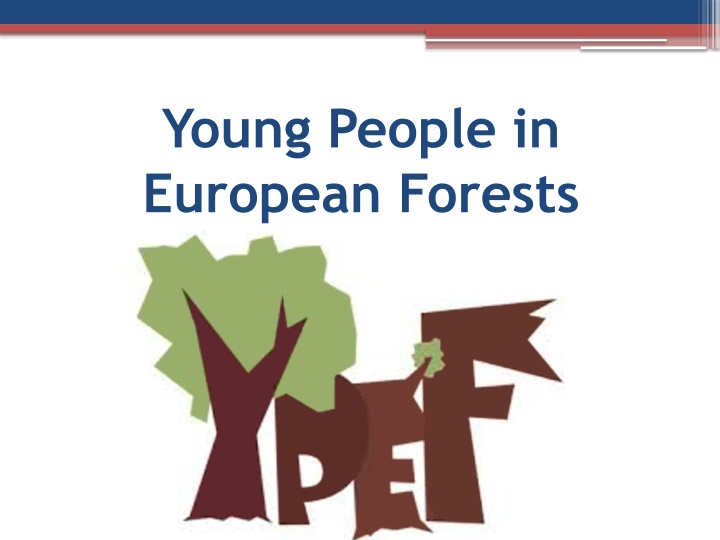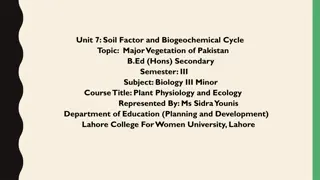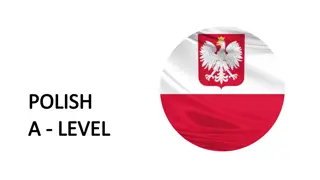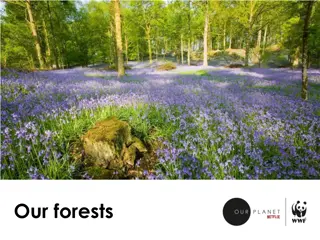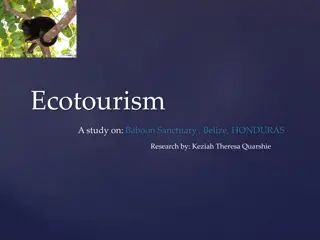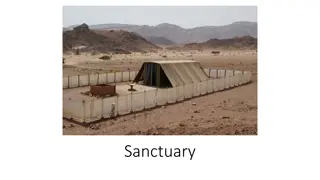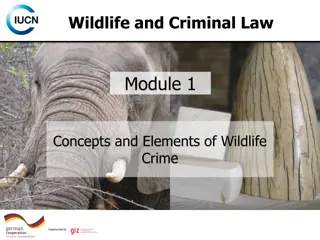Polish Forests: Nature's Beauty and Wildlife Sanctuary
Discover the lush pine and broadleaved forests of Poland, home to diverse flora and fauna. Learn about the levels of a forest ecosystem and the significance of national parks in preserving natural heritage.
Download Presentation

Please find below an Image/Link to download the presentation.
The content on the website is provided AS IS for your information and personal use only. It may not be sold, licensed, or shared on other websites without obtaining consent from the author.If you encounter any issues during the download, it is possible that the publisher has removed the file from their server.
You are allowed to download the files provided on this website for personal or commercial use, subject to the condition that they are used lawfully. All files are the property of their respective owners.
The content on the website is provided AS IS for your information and personal use only. It may not be sold, licensed, or shared on other websites without obtaining consent from the author.
E N D
Presentation Transcript
Young People in European Forests
What is forest? A forest is a large area of land covered with trees or other woody vegetation. This is a natural environment of forest animals.
Typical Polish forests. Pine forest bory - these are coniferous forests: pine, spruce or fir. These forests grow on sandy soils and poor. In their fleece it is easy to find bilberries, cowberries, wild strawberries. Broadleaved forests - gr dy - deciduous forests with oaks, mitts, lime trees, clones. They grow on the fertile soil. Here we will find colourfully blooming bells, violets, hepaticas, anemones.
Structure of the property of forests in Poland At present the area of forests in Poland is a 9088 thousand ha what is a 29.1% is leveling afforestation rates. After the World War II it was equal 20.8%.
Middle Level / Understory Herb / Underbrush / Shrubbery Layer Ferns, wildflowers and other soft stem plants, tree seedlings. Butterflies, mice, weasels, deer, porcupine, skunks, and Rabbits. Upper Canopy Forest Floor This is the top level of the forest formed by leaves and branches of the tallest trees. Different birds and insects. This is home to smaller trees and larger shrubs. This level includes the ground cover and the soil. Flora Many insects, Squirrels and many birds. Worms, bacteria, soil insects, tree roots, spiders, millipedes. Fauna
National Parks in Poland The biggest The oldest
National Parks in Poland In Poland there are 23 national parks. This is an area of outstanding value for the environmental, scientific, social, cultural and educational, with an area of not less than 1000 ha , which is the protection of the whole nature and qualities of landscape. The biggest is Biebrza ski National Park. The oldest is Bia owieski National Park.
Sources Images from: www.ypef.eu https://www.unece.org/fileadmin/DAM/timber/meet ings/20121122/MS_Poland_in_SoEF_bz.pdf https://www.google.pl/imghp Informations from: https://en.wikipedia.org https://pl.wikipedia.org http://projects.cbe.ab.ca/fishcreek/Grade6/Scienc e_files/Levels%20of%20the%20Forest.pdf http://ypef.eu/charakterystyka_lasow
The end Made by Julia Juszczak (class IIIb), Patryk Wyrwich (class IIIc), and Marcel Bednarczyk (class IIIc), from Poland. Gimnazjum im. Kazimierza Jagiello czyka w Rzgowie ul. Szkolna 3, 95-030 Rzg w, Polska tel. +48 42 214 13 39;
